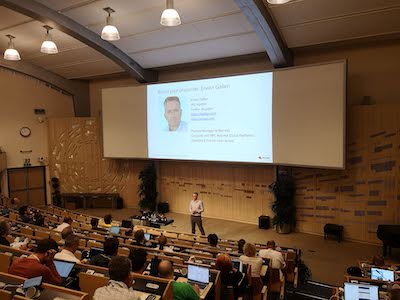How OpenStack enables Face Recognition with GPUs and FPGAs

I’ve done a talk “How OpenStack enables Face Recognition with GPUs and FPGAs” at OpenStack Day CERN 2019, May 27.
Abstract
Have you ever puzzled over the name of someone in a group picture? Now, thanks to OpenStack and TensorFlow, you don’t have to puzzle any more! In this talk, we will demonstrate a Face Recognition program that can identify that familiar face for you. We’ll also open the hood and show you how a Graphics Processing Unit (GPU) and Field-programmable gate array (FPGA) can be used with OpenStack to maximize the speed and accuracy of Face Recognition.
We will explain how applications can be set up to use Face Detection Networks quickly, and how to choose the correct Neural Network design options. The demonstration will show how to tune the frame decoding, and how to reduce the Face Analysis Networks time.
Application developers will get to learn how to do Face Recognition with OpenStack. Operators will learn how to provide resources such as GPUs, virtual GPUs or FPGAs.
Slides
Video
CERN visit
I was lucky to visit one of the most amazing piece of technology on Earth, the CERN ALICE Experiment. This 16m x 16m x 26m detector can exploit the Pb-Pb collisions at the speed of light in the LHC Geneva. How humans can produce some quark-gluon plasma and process Big Bang data with OpenStack.
Particle physics detector CERN ALICEexperiment is located at a depth of 80 meters below ground.
ASICs, FPGAs and GPUs are everywhere in CERN ALICE Experiment From 4TB/s raw data to 100GB/s with Intel FPGAs and GPUs, ALICE is producing 66 TB of data per year.






